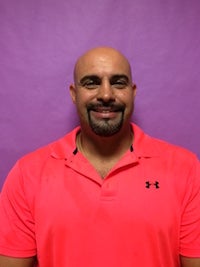We are thrilled to welcome Dr. Len Annetta, Taft Distinguished Professor of Science Education, to MSITE and to introduce him to you. Dr. Annetta has worked as a High School Science Teacher in Maryland, an Assistant and Associate Professor at NC State, and an Associate Professor and Professor at George Mason University (Fairfax, VA). He has held multiple leadership positions over decades, providing service as an academic coordinator, Director, Chair of Special Interest groups in educational technology, as well as serving as the Executive Director of the Institute for Modeling, Simulations, and Serious Games Research at George Mason University. Dr. Annetta continues his leadership as the Taft Distinguished Professor of Science Education here at ECU. We look forward to collaborating with Dr. Annetta. To learn more about him, we asked Dr. Annetta a few questions about North Carolina, Science Education, Educational Technology, and a question about his hobbies. We invite you to read his replies.
- What interests you about ECU and North Carolina?
I always had an admiration for ECU’s commitment to online teaching and learning and instructional technology inclusion across the curriculum. During my seven years at NC State, I grew a competitive love for helping educators with the challenges NC public schools face, particularly the schools in the east side of the state. When the opportunity arose for me to possibly come back to NC and be on the ECU faculty, I had to relentlessly pursue it and am so excited to be back here and working with such great colleagues.
- What knowledge, skills, and attitudes should a science educator possess?
This question is one that has been debated for years and I suspect will be debated for many more, but I will gladly give you my opinion. As with any other discipline based educator, a science teacher should have the depth and breadth of content knowledge to challenge student thinking, the disposition to understand the role of a professional educator, and to have the will to pursue contemporary and cutting edge knowledge and techniques for the ever changing educational landscape.
- What are some of your favorite serious/educational games for science students?
My work evolved from me creating games for students to the students becoming the designer and developer of Serious Education Games. Although there are many good science based games out (e.g., Immune Attack, Mission Biotech, etc) the work my research team and I have accomplished the last 15 years or so has created a solid foundational literature base on greater knowledge, cognitive, and attitudinal gains from students being the designer/developer than just a player.
- What instructional methods do you recommend a high school science teacher use in order to pique student interest in science?
The short answer is the one they didn’t use the day before. Again, this has been argued in our field for some time, but engaging the learner is a crucial step in the learning process. Understanding what students do outside of school and bridging those interests to one’s teaching repertoire is always an effective means to engagement. This is how my interest in games came about. I was not a gamer per se, but while I taught high school in the 90’s, my students would choose not to do the assigned homework. When pressed on what they were doing instead, playing games was a common theme. Integrating games in my teaching helped not only to engage my students, but helped students, who were not succeeding in traditional instruction, learn the science content.
- What excites you about instruction in 3D virtual environments?
3D environments play a role in cognitive development. Visuospatial ability is important to successful learning of difficult concepts. Learning bond angles in chemistry, architecture in engineering and technology education, and geometry in math (to names a few) are gateway areas for many to continue or halt their pursuit of STEM degrees and subsequent occupations. With respect to online learning, our work using synchronous, 3D environments as a platform for distance learning has suggested a stronger online presence than in asynchronous courses and communication avenue for students. This is an area that I hope to bring to ECU’s online learning arena.
- How do you connect practices in science and engineering education?
Creativity is one area that I have argued has been diminishing in students-mostly because of standardized tests-but the releasing of the Next Generation Science Standards in 2015 has given science educators a model for integrating science and engineering. We just published and edited a book on this subject with researchers worldwide sharing how they’ve created this natural bridge. For us, our Serious Education Game (SEG) design model allows for students to use their imagination and creativity to learn science content at a much deeper level than what they get in a traditional class, while also learning the test-retest engineering model. Students often don’t know that they are learning science or engineering; they just think they are playing in a sandbox through SEG creation.
- What hobbies or activities do you enjoy away from work?
I am a father to two teenagers who are involved in sports so most of my “off” time is spent watching or coaching them. I golf and workout when I can as well but the blessing and curse of technology is that I, like most of my colleagues, are on call 24/7.
